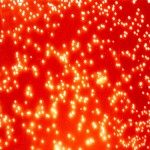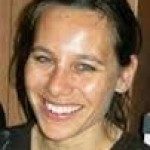Link to Pubmed [PMID] – 35019836
Link to DOI – 10.1099/mgen.0.000737
Microb Genom 2022 01; 8(1):
The rapid emergence of multidrug-resistant Klebsiella pneumoniae is being driven largely by the spread of specific clonal groups (CGs). Of these, CG147 includes 7-gene multilocus sequence typing (MLST) sequence types (STs) ST147, ST273 and ST392. CG147 has caused nosocomial outbreaks across the world, but its global population dynamics remain unknown. Here, we report a pandrug-resistant ST147 clinical isolate from India (strain DJ) and define the evolution and global emergence of CG147. Antimicrobial-susceptibility testing following European Committee on Antimicrobial Susceptibility Testing (EUCAST) guidelines and genome sequencing (Illumina and Oxford Nanopore Technologies, Unicycler assembly) were performed on strain DJ. Additionally, we collated 217 publicly available CG147 genomes [National Center for Biotechnology Information (NCBI), May 2019]. CG147 evolution was inferred within a temporal phylogenetic framework (beast) based on a recombination-free sequence alignment (Roary/Gubbins). Comparative genomic analyses focused on resistance and virulence genes and other genetic elements (BIGSdb, Kleborate, PlasmidFinder, phaster, ICEfinder and CRISPRCasFinder). Strain DJ had a pandrug-resistance phenotype. Its genome comprised the chromosome, seven plasmids and one linear phage-plasmid. Four carbapenemase genes were detected: bla NDM-5 and two copies of bla OXA-181 in the chromosome, and a second copy of bla NDM-5 on an 84 kb IncFII plasmid. CG147 genomes carried a mean of 13 acquired resistance genes or mutations; 63 % carried a carbapenemase gene and 83 % harboured bla CTX-M. All CG147 genomes presented GyrA and ParC mutations and a common subtype I-E CRISPR-Cas system. ST392 and ST273 emerged in 2005 and 1995, respectively. ST147, the most represented phylogenetic branch, was itself divided into two main clades with distinct capsular loci: KL64 (74 %, DJ included, emerged in 1994 and disseminated worldwide, with carbapenemases varying among world regions) and KL10 (20 %, emerged in 2002, predominantly found in Asian countries, associated with carbapenemases NDM and OXA-48-like). Furthermore, subclades within ST147-KL64 differed at the yersiniabactin locus, OmpK35/K36 mutations, plasmid replicons and prophages. The absence of IncF plasmids in some subclades was associated with a possible activity of a CRISPR-Cas system. K. pneumoniae CG147 comprises pandrug-resistant or extensively resistant isolates, and carries multiple and diverse resistance genes and mobile genetic elements, including chromosomal bla NDM-5. Its emergence is being driven by the spread of several phylogenetic clades marked by their own genomic features and specific temporo-spatial dynamics. These findings highlight the need for precision surveillance strategies to limit the spread of particularly concerning CG147 subsets.



